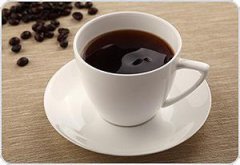The relationship between Coffee and Chocolate

Beginning in the early 18th century, another dark drink, chocolate, became popular among courts and aristocrats. Dickens described the aristocrat drinking chocolate in A Tale of Two Cities as follows: "The first servant will hold the chocolate pot before the holy lord; the second servant will use the special small tools he brought to grind the chocolate into foam; the third servant will present the napkin that the lord likes; the fourth will pour chocolate juice." To cut off one attendant would inevitably hurt the dignity of your excellency, which is praised by all heaven. It would be a great shame on his family coat of arms if only three people served him chocolate."
In many ways chocolate is like a throwback to the old drink ideology. Chocolate had no sobering effect and could not bring people spiritual pleasure. On the contrary, until the end of the 18th century, there was a popular view that chocolate had an aphrodisiac effect. As Dickens wrote in A Tale of Two Cities, aristocrats must be served while drinking chocolate, usually lying down or sitting very relaxed in a chair. This is also in contrast to the "sitting work state" implied by coffee. Although coffee is also a breakfast drink, coffee means that a busy day has begun again, and chocolate means that it is just another day of enjoyment. The drinking habits of the two writers may prove the class difference implied by the drink: Goethe, Privy Councillor of Weimar, hated coffee and loved chocolate, while Balzac, a commoner, became the most famous coffee addict in literary history. But this aristocratic lifestyle also had to decline with the progress of civil society. The invention of solid chocolate and chocolate powder greatly reduced the cost of chocolate, making it as simple as coffee-but without exciting functions. Finally, chocolate is classified as a children's food/drink in the beverage category because of its nutritional content, while coffee strengthens its position in the beverage world day by day, from Europe to America, Asia and even back to Africa. In today's world, whether it is work or pleasure, everyone needs to be refreshed and everyone needs good taste.
Important Notice :
前街咖啡 FrontStreet Coffee has moved to new addredd:
FrontStreet Coffee Address: 315,Donghua East Road,GuangZhou
Tel:020 38364473
- Prev

Is coffee good for you?
Some people try to justify coffee in medicine, while others do the opposite and cite coffee as a footnote to their own theories. In the early 17th century, the four-humors theory, inherited from ancient Greece, still dominated medicine. This theory believed that natural substances were composed of air, water, fire and earth, combined with heat, dryness, humidity and cold. Inference to medicine, thinking that the human body and
- Next

How did African coffee beans be accepted by European civilization?
Balzac carries a coffee pot with him. With the help of this drink, he can write for 12 hours a day. Beethoven must use no less than 60 grams of coffee beans per cup of coffee, or he will be furious. It is said that Voltaire drinks 50 cups of coffee a day except coffee, no drink can play such an important role in the history of human civilization, this drink is located in a corner, in Europe
Related
- Beginners will see the "Coffee pull flower" guide!
- What is the difference between ice blog purified milk and ordinary milk coffee?
- Why is the Philippines the largest producer of crops in Liberia?
- For coffee extraction, should the fine powder be retained?
- How does extracted espresso fill pressed powder? How much strength does it take to press the powder?
- How to make jasmine cold extract coffee? Is the jasmine + latte good?
- Will this little toy really make the coffee taste better? How does Lily Drip affect coffee extraction?
- Will the action of slapping the filter cup also affect coffee extraction?
- What's the difference between powder-to-water ratio and powder-to-liquid ratio?
- What is the Ethiopian local species? What does it have to do with Heirloom native species?

